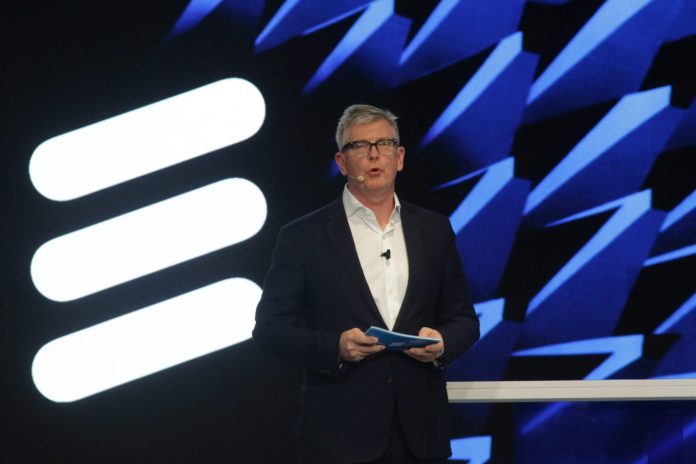Ericsson sought to set itself apart from Nokia in its approach to industrial markets at Mobile World Congress in Barcelona, as it made clear it will serve new industrial customers via its traditional operator customers.
Finnish vendor Nokia has stated it will go direct to industry, if required, to roll out private LTE and 5G networks, and serve pent-up demand among the industrial set for low-latency, high-bandwidth, high-reliability mobile networks. But Ericsson chief executive Börje Ekholm (pictured), addressing MWC yesterday (February 25), suggested its old rival’s strategy was wrongheaded.
“We are working with our service provider customers. When we provide connectivity to enterprise, we will do with service providers. It is never a good idea to compete with your own customers. It is better to find win-win solutions. That’s what we are doing,” said Ekholm.
Ericsson used the early-morning address to count up its 5G contracts, and declare its reclaimed leadership of the mobile market. Ekholm also addressed issues of security, including those surrounding Chinese vendors Huawei and ZTE, and the need for the mobile ecosystem at large to combine in battle against cybersecurity threats on next-generation networks.
But he made clear the real revolution in 5G will come with transformation of industry, and stated Ericsson’s position behind its traditional operator customers on the front line. “With 5G, we move way beyond the consumer space… [to] the industrial internet. 5G will be critical to realise this vision of a billion connected devices, and to create opportunities for industrial applications, and way beyond. Increasing use of robotics will dramatically transform manufacturing systems,” he explained.
“Smart cities will transform the way cities look in future. But this means we will need to build enterprise capabilities. [It is about] more than selling SIM cards. And early movers will have first advantage, among those to addressing the enterprise space.”
Nokia reckons the potential market for private LTE, running in both licensed and unlicensed spectrum, stands at around 15 million locations – potential sites to place radio fixtures. This compares with around seven million base stations for global public networks.
Nokia’s position is it will go direct, if it finds the operator community unable or unwilling to partner with it in pursuit of this new business. Ericsson’s is that it will defer to the old template, as it can, and piggyback on private LTE and 5G networks being licensed or operated by major carriers.
In Barcelona, Ericsson also made clear that cellular low-power wide-area (LPWA) technologies, in the shape of LTE-based NB-IoT and LTE-M, will continue to serve a major part of the developing IoT market, even with the advent of new-radio 5G technologies. Ericsson claims to have enabled more than half of commercial NB-IoT and LTE-M networks. It reckons cellular IoT connections will grow at a rate of 27 per cent per year through 2024, to reach “at least” four billion in the period.
“5G will be needed where there are special requirements for bandwidth and latency, and for connecting many more points, and where there are problems with LTE congestion,” said Ekholm, mentioning also cases of factory automation and autonomous driving, tying in with high-functioning edge systems.

